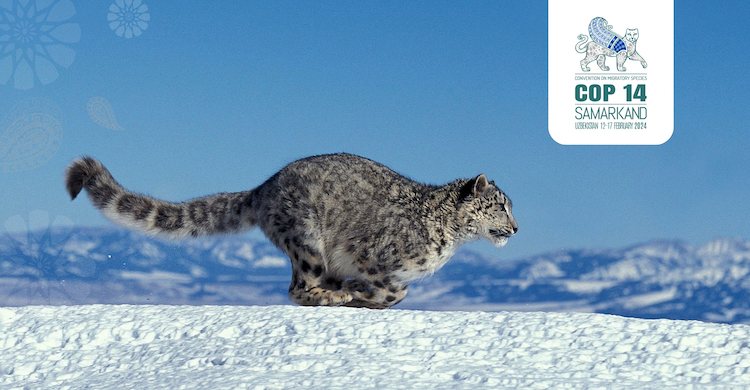By Jutta Wolf
BERLIN | 19 February 2024 (IDN) — While human migration continues to stir up emotions, the world’s migratory species that undertake astonishing journeys between ecosystems, often through air, land, and water—increasingly damaged by unsustainable human activities—remain out of focus.
The State of the World’s Migratory Species report—launched at the start of the 14th Meeting of the Conference of the Parties (COP14) to the Convention on the Conservation of Migratory Species of Wild Animals (CMS) in the Uzbek capital Samarkand—for the first time sets out compelling evidence of the peril facing these awe-inspiring animals.
The report finds that migratory species are being hit hard, particularly by overexploitation and habitat loss, degradation, and fragmentation. As a result of these pressures, one in five CMS-listed species are threatened with extinction, and 44 per cent have a decreasing population trend. The situation is far worse in aquatic ecosystems, with 97 per cent of the Convention on Migratory Species (CMS)-listed migratory fish at risk of extinction.
COP14, which concluded on 17 February, adopted many new measures to safeguard migratory species. Among the measures agreed upon was the addition of 14 species to the coverage of the Convention, including the Eurasian Lynx, Pallas’s Cat, and Sand Tiger Shark. Other measures seek to safeguard species such as the chimpanzee and giraffe.
The meeting adopted resolutions, decisions and concerted actions on over 100 distinct topics by representatives of the world treaty’s 133 member states.
After nearly two decades of inconclusive negotiations, an agreement was also reached on a Central Asian Flyway spanning 30 Range States of migratory birds. The adopted initiative includes establishing a coordinating unit in India with financial support from the Indian Government.
Key outcomes of COP14 include: A new, science-based Samarkand Strategic Plan for Migratory Species for 2024-2032. The SPMS Vision Statement sets out Six Goals: improvement of the conservation status of migratory species; maintaining and restoring the habitats and ranges of migratory species; and eliminating or “significantly” reducing threats affecting migratory species.
The SPMS further aims at Implementing CMS and supporting it by adequate knowledge, capacity, and resources; available science and information through effective governance, including the use of the best available science and information, and collaborative working; and boosting the profile of CMS and synergies and with other relevant international frameworks.
Champions
On the margins of CMS COP14, the highly anticipated Champion Night took place to honour new CMS Champions, recognized for their exceptional efforts and commitments to the global fight for conserving migratory species, according to a CMS press release.
The Champions included the Government of Uzbekistan for its contribution to securing ecological connectivity for 2024-2026. Ecological connectivity is at the forefront of the global environmental and political agenda of the Central Asian Republic.
The Government of India has been awarded Champion Plus for contributing to the conservation of migratory birds in the Central Asian Flyway. The Central Asian Flyway encompasses at least 279 populations of 182 migratory waterbird species, including 29 globally threatened and near-threatened species, which breed, migrate, and winter within the region.
This contribution will support the establishment of a new CMS Central Asian Flyway Initiative that aims to enhance cooperation and promote regional synergies. [IDN-InDepthNews]
Photo: Snow Leopard © Canva.com




